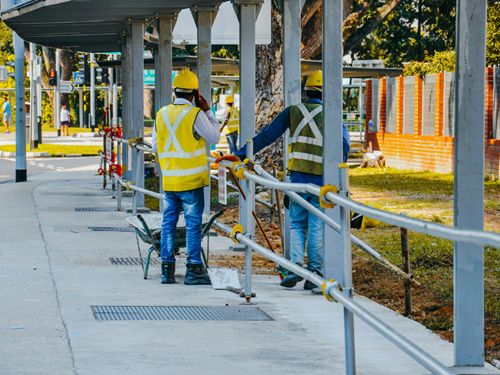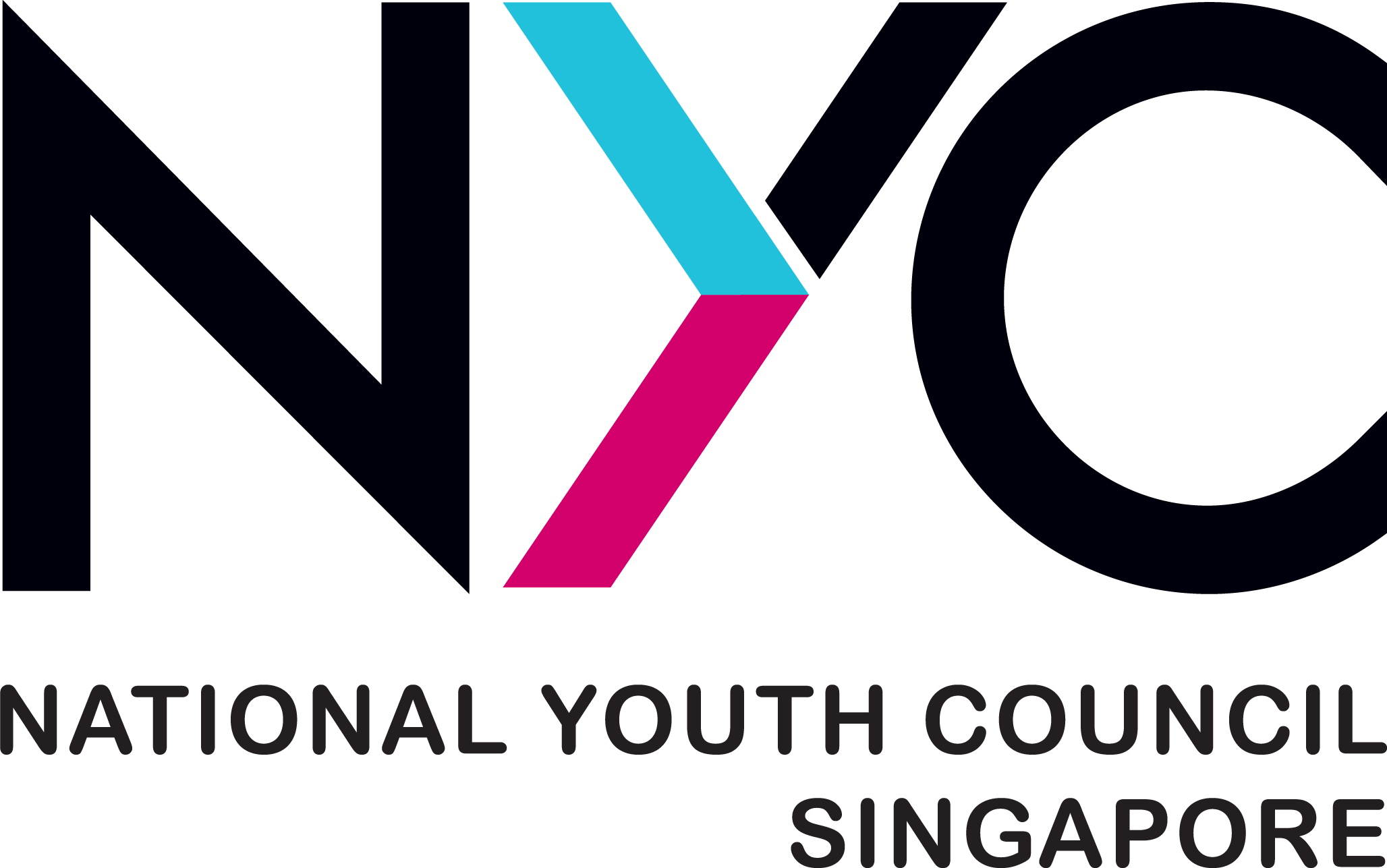Achieving a sustainable and haze-free future is a collective effort of ASEAN
5 March 2021
A haze-free future can be achieved with better access to resources and greater support for sustainable palm oil production.
Written By: Sarah Chan

The return of hazy air conditions in recent days has seen areas in Singapore entering the unhealthy 24-hour PSI range due to the detection of hotspots in the region.
While the situation might not be as dire as the 2015 haze crisis, it is still a poignant reminder of the issues surrounding the use of palm oil and the effects of transboundary haze on sustainability.
These were some of the issues discussed at Building a Sustainable Future: Vision for a Haze-Free ASEAN which took place virtually on Saturday (Feb 27).

The webinar was attended by more than 50 participants and discussed issues surrounding transboundary haze in the region. PHOTO CREDIT: NATIONAL YOUTH COUNCIL AND SINGAPORE INSTITUTE OF INTERNATIONAL AFFAIRS
The session was moderated by Ms Gan Meixi, deputy director of sustainability programmes at the Singapore Institute of International Affairs (SIIA).
In attendance were industry experts Mr Benjamin Tay, executive director at PM Haze and Ms Stephanie Lim, sustainability communications lead at Musim Mas.
The hour-long webinar is a collaboration between the National Youth Council (NYC) and SIIA. It is part of the Asia-Ready Exposure Programme under NYC.
What causes the haze?
The haze occurs due to the use of fire to clear land for agriculture such as palm oil, which is a commodity that is present in most of our everyday items.
These forest fires happen on peatland, a type of carbon rich ecosystem. When peat burns, it releases greenhouse gases like carbon dioxide and other pollutants contributing to climate change, explained Ms Gan during her opening address.
In his sharing, Mr Tay highlighted commodity driven agriculture like industrial agriculture for palm oil, forestry wood products and small scale subsistence agriculture as some of the main drivers of deforestation in South-East Asia.
With the use of fire to clear land and the increased risk of fires on degraded peatlands, these factors contribute to the occurrence of the haze in the region.
Mr Tay recommended the Haze Outlook Report by SIIA to find out more about the various factors and available solutions in the industry.
Effects of transboundary haze in the region
The recurring transboundary haze often happens during the dry months of July and October, and its effects are wide ranging, posing both social and economic issues, Mr Tay shared.
With Singapore having one of the highest rates of childhood asthma, the prevalence of the haze would lead to negative public health consequences as it affects people with such pre-existing conditions.

Migrant workers are vulnerable groups who face increased health risks due to their prolonged exposure to the haze while working outdoors. PHOTO CREDIT: NUR ALISHA VIA UNSPLASH
The haze was also an economic burden which cost the country more than $1.8 billion, or about $460 per resident in Singapore, as shown in statistics from the 2015 haze crisis.
But the effects of the 2015 haze crisis have also created a push for change and more actions have since been taken by various sectors, Mr Tay said in response to a question on how the haze situation has changed over the years.
“There is a part of haze that is out of control like the climate factors that create dry landscapes or droughts leading to an increased risk of fire. But [there is another part] of haze like human actions to prevent haze on the ground,” he said.
He believes that the haze situation has improved in Singapore and within the region. Several food and goods manufacturers have made the switch to using certified sustainable palm oil in their supply chain.
“It might not be a lot but it is a good start,” said Mr Tay.
In major producer countries like Indonesia, the government has stepped up efforts to implement specific management policies and increased efforts to restore peatlands.
More regulations including the Transboundary Haze Pollution Act were also introduced in Singapore, which Mr Tay believes is “a good symbolic deterrent” that can help increase transparency in the production sector.
Improving access to resources and encouraging sustainability
Oil palm must be replanted every 25 years to retain its efficiency. However, replanting oil palm using the proper methods is a costly and complicated process in contrast to slash-and-burn practises.
Drawing from her experience of meeting smallholder palm oil farmers in Indonesia, Ms Lim emphasised the need for greater access to resources to support farmers in their journey towards sustainability.
She highlighted the effects of a multi-faceted programme like Musim Mas’ Smallholders Programme. Farmers can benefit from access to government subsidies and various resources in education and certification to help them achieve sustainable palm oil production goals.
“Just knowing the right thing does not mean they (smallholder farmers) can do it considering their circumstances and resources. We want them to be self-sufficient even after we leave the project area,” Ms Lim said.

Sustainable palm oil is “beyond just about palm” as it supports various sustainable development goals in countries like Indonesia where it is a widely grown crop, said Ms Lim. PHOTO CREDIT: IHSAN ADITYA VIA PEXELS
In her response to the use of a carbon tax in Singapore, Ms Lim felt that positive incentives such as the sharing of research and development should be made available when implementing a carbon tax.
“It is not just about having the carbon tax itself that means that all companies can do it, especially for smaller mills, refineries or plantation companies.”
“Having a blanket carbon tax without some incentive or creating an enabling environment makes it quite challenging for smaller companies to adopt,” she explained, adding that the implementation of a carbon tax alone is already challenging due to current limitations.
Among Association of Southeast Asian Nations (ASEAN) countries, Mr Tay also encouraged the establishment of a knowledge sharing platform for countries to better understand the challenges faced on the ground.
“If we don’t know or we do not go on the ground to understand them, it becomes difficult for us to empathise with their situation… Rather than calling them out to not burn and be more sustainable, [we need to know] how do they actually do that and how do we incentivise them to [be sustainable.]” he said.
With the introduction of the Singapore Green Plan 2030, both experts agreed that the plan can help improve overall understanding on sustainability and promote the integration of sustainable development in company operations.
However, Mr Tay also acknowledged the need for capacity building to ensure companies can follow through with their plans in sustainability development.
Singapore’s economic role in sustainability
Among ASEAN countries, Ms Lim believes that Singapore has the potential to tap onto our strengths as a financial hub and support sustainable developments through green financing.
She cited the implementation of the Environmental, Social and Governance (ESG) factors that has helped push banks towards responsible financing as they ensured that companies and investments abide by various sustainability standards.
With Singapore’s concentration of consumers with high spending power and our high Growth Domestic Product, Mr Tay also highlighted Singapore’s “symbolic ability” to spur more sustainable actions in the region.
He said, “To encourage someone to stop burning, he needs to have some incentives to implement sustainability practises on the ground.
“If we as consumers are willing to pay more for RSPO-certified products, the extra money paid can immediately trickle upstream and help a farmer to support and encourage sustainable practises.”
Role of consumers in haze-free consumption
Palm oil is an efficient commodity found in most of our everyday products. In a survey by PM Haze, almost 90 per cent of eateries in Singapore were found to be using palm oil.
But rather than targeting the commodity, Mr Tay said that it is more important to “highlight positive processes in sustainable palm oil production” instead. One way consumers can do so is by looking out for the RSPO certification on haze-free products.
This certification is a consumer-visible trademark that ensures responsible palm oil production and protection for biodiversity. Consumers can reference the supermarket guide on haze-free products in Singapore published by PM Haze.
At the end of her segment Ms Lim also recommended several steps participants can take towards sustainability.
These steps include: Supporting sustainable palm oil movements like PM Haze; having conversations to voice your wish for the use of sustainable palm oil; supporting brands with sustainable palm oil commitments; and having empathy and being open-minded as a consumer.
Emphasising the role of consumers in supporting sustainable palm oil and haze-free consumption, Ms Lim said: “Harness your power as a consumer. Vote with your money and have a conversation with others on the use of sustainable palm oil.”
